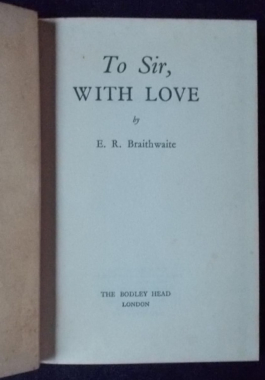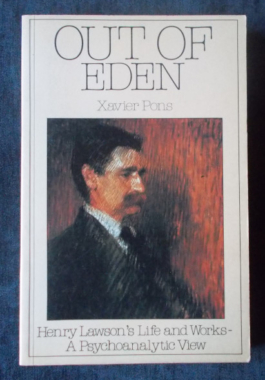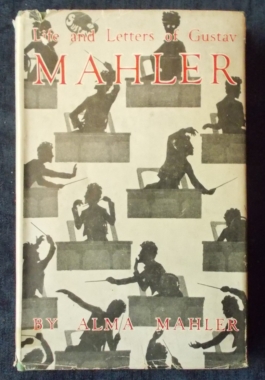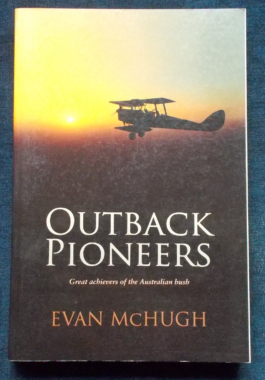-

 The autobiographical tale of Rick Braithwaite's battle to find work in post-war London. A trained engineer, he could only find work as a teacher. When a woman refuses to sit next to him on the bus, Braithewaite is saddened and angered by her prejudice. In cosmopolitan London, he had hoped for a more enlightened attitude. When he begins his first teaching job in a tough East End school he finds the same hostile prejudice. Yet slowly and painfully, the barriers begin to break. He shames his pupils, wrestles with them, enlightens them and eventually comes to love them - as they come to love and respect him. To Sir With Love is the story of a dedicated teacher who turns hate into love, teenage rebelliousness into energetic self-respect, contempt into consideration for others - the story of a man's own integrity winning through against all the odds.
The autobiographical tale of Rick Braithwaite's battle to find work in post-war London. A trained engineer, he could only find work as a teacher. When a woman refuses to sit next to him on the bus, Braithewaite is saddened and angered by her prejudice. In cosmopolitan London, he had hoped for a more enlightened attitude. When he begins his first teaching job in a tough East End school he finds the same hostile prejudice. Yet slowly and painfully, the barriers begin to break. He shames his pupils, wrestles with them, enlightens them and eventually comes to love them - as they come to love and respect him. To Sir With Love is the story of a dedicated teacher who turns hate into love, teenage rebelliousness into energetic self-respect, contempt into consideration for others - the story of a man's own integrity winning through against all the odds. -
 Known to millions all over the world as the best-selling author of books about visitors from outer space, Erich von Däniken, the man, is an enigma. What are we to make of someone who is, at the same time, a writer and thinker whose daring ideas have been desseminated in millions of books and a man who has been convicted of fraud and embezzlement? In this biography of von Däniken, by his friend Peter Krassa, the author of Chariots Of The Gods? is revealed as an extraordinary, larger than life character. Däniken gives us his own account of what really happened in the miscarriage of justice that led to his arrest and imprisonment. Krassa paints a vivid picture of this seeker after gods, who has travelled from India to the jungles of South America in his search for proof of his theories of 'astronaut gods' who visited Earth in the distant past. Illustrated with black and white photographs.
Known to millions all over the world as the best-selling author of books about visitors from outer space, Erich von Däniken, the man, is an enigma. What are we to make of someone who is, at the same time, a writer and thinker whose daring ideas have been desseminated in millions of books and a man who has been convicted of fraud and embezzlement? In this biography of von Däniken, by his friend Peter Krassa, the author of Chariots Of The Gods? is revealed as an extraordinary, larger than life character. Däniken gives us his own account of what really happened in the miscarriage of justice that led to his arrest and imprisonment. Krassa paints a vivid picture of this seeker after gods, who has travelled from India to the jungles of South America in his search for proof of his theories of 'astronaut gods' who visited Earth in the distant past. Illustrated with black and white photographs. -
 Based on meticulous research and interviews with dozens of family members, friends, lovers, directors, and costars, Rebel offers a revelatory look at actor and film icon James Dean (1931-1955) - cinema's most enduring symbol of rebellious youth, has held the world's fascination since his tragic death at the age of twenty-four. From the dusty roads of rural Indiana to Manhattan's gay culture, from Broadway to Burbank, here is Dean's troubled life: the tragic death of his mother when he was nine; his tumultuous relationship with his father; his rise to stardom in New York and Hollywood and his on-and off-screen exploits. With black and white photos.
Based on meticulous research and interviews with dozens of family members, friends, lovers, directors, and costars, Rebel offers a revelatory look at actor and film icon James Dean (1931-1955) - cinema's most enduring symbol of rebellious youth, has held the world's fascination since his tragic death at the age of twenty-four. From the dusty roads of rural Indiana to Manhattan's gay culture, from Broadway to Burbank, here is Dean's troubled life: the tragic death of his mother when he was nine; his tumultuous relationship with his father; his rise to stardom in New York and Hollywood and his on-and off-screen exploits. With black and white photos. -
 Clive James began keeping a verse diary for 1982 and recounts the year - his own and world events - in verse! Everything gets a mention - from Maggie Thatcher to the birth of Prince William, Prince Andrew's pursuit of Koo Stark, the ongoing Lebanan/Israel conflict, the invasion of the Queen's bedroom in the small hours by Michael Fagan and the Falklands War.
Clive James began keeping a verse diary for 1982 and recounts the year - his own and world events - in verse! Everything gets a mention - from Maggie Thatcher to the birth of Prince William, Prince Andrew's pursuit of Koo Stark, the ongoing Lebanan/Israel conflict, the invasion of the Queen's bedroom in the small hours by Michael Fagan and the Falklands War. -
 Even if the six daughters of the charming, eccentric David, Lord Redesdale and his wife Sydney - born between 1904 and 1920 - had been quite ordinary, they were born into one of the most traumatic centuries of British history. The status to which they were born would have made interesting reading on its own, but Nancy, Pamela, Diana, Unity, Decca and Debo - known as the mad, mad Mitfords - were far from ordinary. The true story behind the gaiety and frivolity of the six Mitford daughters is as sensational as a novel. Nancy: her bright social existence masked a doomed obsessional love, which soured her success; Pam: a countrywoman married to one of the finest brains in Europe; Diana: an iconic beauty, married, and at 22, fell in love with Oswald Moseley, leader of the British fascists; Unity: she was romantically in love with Hitler and became a member of his inner circle before shooting herself in the temple when World War II was declared; Jessica: the family rebel, who declared herself a Communist in the schoolroom; and Debo: she became the Duchess of Devonshire. The author was given exclusive access to the Mitford archives. Illustrated with black and white photographs.
Even if the six daughters of the charming, eccentric David, Lord Redesdale and his wife Sydney - born between 1904 and 1920 - had been quite ordinary, they were born into one of the most traumatic centuries of British history. The status to which they were born would have made interesting reading on its own, but Nancy, Pamela, Diana, Unity, Decca and Debo - known as the mad, mad Mitfords - were far from ordinary. The true story behind the gaiety and frivolity of the six Mitford daughters is as sensational as a novel. Nancy: her bright social existence masked a doomed obsessional love, which soured her success; Pam: a countrywoman married to one of the finest brains in Europe; Diana: an iconic beauty, married, and at 22, fell in love with Oswald Moseley, leader of the British fascists; Unity: she was romantically in love with Hitler and became a member of his inner circle before shooting herself in the temple when World War II was declared; Jessica: the family rebel, who declared herself a Communist in the schoolroom; and Debo: she became the Duchess of Devonshire. The author was given exclusive access to the Mitford archives. Illustrated with black and white photographs. -
 From the book: 'To talk about the art of living has come to sound more artificial than artistic. But St. Francis did, in a very definite sense, make the very act of living an art, though it was an unpremeditated art.' This edition has beautiful colour illustrations and is a very beautiful portrait of the most lovable of saints, the man who began as a poet and became a living legend.
From the book: 'To talk about the art of living has come to sound more artificial than artistic. But St. Francis did, in a very definite sense, make the very act of living an art, though it was an unpremeditated art.' This edition has beautiful colour illustrations and is a very beautiful portrait of the most lovable of saints, the man who began as a poet and became a living legend. -
 Henry Lawson is still an enigmatic figure in Australian folklore. Both his life and his works lend themselves to widely differing, if not contradictory interpretations. This book, a psychoanalytic view, focuses on clarification of these contradictions and features many hitherto unpublished details of Lawson's life.
Henry Lawson is still an enigmatic figure in Australian folklore. Both his life and his works lend themselves to widely differing, if not contradictory interpretations. This book, a psychoanalytic view, focuses on clarification of these contradictions and features many hitherto unpublished details of Lawson's life. -
 A very vivid picture of Mahler's life and his stormy career as Director of State Opera in Vienna, his habits when composing, his relations with Strauss, Bruckner and others, his later career as a conductor and his death. For much of his life composing was necessarily a part-time activity while he earned his living as a conductor and his compositions were only more readily recognised in the 1940s. His works are generally designed for large orchestral forces, symphonic choruses and operatic soloists. These works were frequently controversial when first performed, and several were slow to receive critical and popular approval; exceptions included his Second Symphony, Third Symphony, and the triumphant premiere of his Eighth Symphony in 1910. The International Gustav Mahler Institute was established in 1955 to honour the composer's life and achievements.
A very vivid picture of Mahler's life and his stormy career as Director of State Opera in Vienna, his habits when composing, his relations with Strauss, Bruckner and others, his later career as a conductor and his death. For much of his life composing was necessarily a part-time activity while he earned his living as a conductor and his compositions were only more readily recognised in the 1940s. His works are generally designed for large orchestral forces, symphonic choruses and operatic soloists. These works were frequently controversial when first performed, and several were slow to receive critical and popular approval; exceptions included his Second Symphony, Third Symphony, and the triumphant premiere of his Eighth Symphony in 1910. The International Gustav Mahler Institute was established in 1955 to honour the composer's life and achievements. -

 Russell started his newspaper career with the Newcastle Chronicle before joining the Daily Express when it was launched by Arthur Pearson in 1900. He eventually moved to the Reuters News Agency where he became a special foreign correspondent. After covering the Gallipoli campaign he became on of the five journalists selected by the government to report the war on the Western Front. Over 1921 and 1922 he accompanied the Prince of Wales, the future Edward VIII, on a tour of Japan and India, writing during the course of the journey, which was, 'by no means conducive to quiet composition...' Illustrated with black and white archival photographs.
Russell started his newspaper career with the Newcastle Chronicle before joining the Daily Express when it was launched by Arthur Pearson in 1900. He eventually moved to the Reuters News Agency where he became a special foreign correspondent. After covering the Gallipoli campaign he became on of the five journalists selected by the government to report the war on the Western Front. Over 1921 and 1922 he accompanied the Prince of Wales, the future Edward VIII, on a tour of Japan and India, writing during the course of the journey, which was, 'by no means conducive to quiet composition...' Illustrated with black and white archival photographs. -

Running Amok: Mark Bowling
$20.00As a journalist, Mark goes where the stories are - from East Timor to cover the struggle for independence, to Aceh and West Papua to report on the separatist crisis and to Ambon where Christians and Muslims wage a bloody war. But he is also a husband and father. Amid the violence he and wife Kim set out to make a home for their family, trying to balance the demands of life as a foreign correspondent with the strangeness of a very different culture and a country running amok. Bowling joined ABC as a reporter in 1985. Illustrated with colour photos on verso of front and back covers. -

The Bush: Don Watson
$22.00Most Australians live in cities and cling to the coastal fringe, yet our sense of what an Australian is - or needs to be - is drawn from the vast and varied inland called 'the bush'. Don Watson explores the bush as it was and as it is now: the triumphs and ruination, the commonplace and the bizarre, the stories we like to tell about ourselves and the national character and those we don't. A fresh examination of our landscape, our unique creatures and ourselves, done in telling, wry detail. Illustrated with black and white and colour photographs. -
 When this work was published in 1969, it was the first full length study of Maria Theresa to be written in English for sixty years. Called to the throne in 1740, at the age of twenty-three, Maria Theresa was wholly unprepared for the events that were to confront her, and trusting in the honour of her fellow monarchs, the young queen found herself with a virtually nonexistent army at the head of a bankrupt and disaffected empire - an empire shortly to be set upon by half of Europe, intent on shattering the Habsburg power for ever. Married to an amiable but ineffectual husband whom she adored, surrounded by shortsighted advisers senile to the point of decrepitude, her only weapons were her charm, her unbreakable will, and her almost reckless courage. With these, and by her own immense exertions, she first held her powerful enemies at bay; then, choosing new advisers with astonishing skill, and discovering in herself a fund of commonsense amounting almost to genius, she instituted wide-reaching reforms which were to unify the Empire's bewildering mixture of lands and peoples, and bring it to the threshold of the revolutionary age. With all this she remained a wife and a mother - most touchingly so in her vast correspondence with her many children.
When this work was published in 1969, it was the first full length study of Maria Theresa to be written in English for sixty years. Called to the throne in 1740, at the age of twenty-three, Maria Theresa was wholly unprepared for the events that were to confront her, and trusting in the honour of her fellow monarchs, the young queen found herself with a virtually nonexistent army at the head of a bankrupt and disaffected empire - an empire shortly to be set upon by half of Europe, intent on shattering the Habsburg power for ever. Married to an amiable but ineffectual husband whom she adored, surrounded by shortsighted advisers senile to the point of decrepitude, her only weapons were her charm, her unbreakable will, and her almost reckless courage. With these, and by her own immense exertions, she first held her powerful enemies at bay; then, choosing new advisers with astonishing skill, and discovering in herself a fund of commonsense amounting almost to genius, she instituted wide-reaching reforms which were to unify the Empire's bewildering mixture of lands and peoples, and bring it to the threshold of the revolutionary age. With all this she remained a wife and a mother - most touchingly so in her vast correspondence with her many children. -
 In 1936, athlete Jesse Owens won four gold medals at the Berlin Olympics. Two years later, boxer Joe Louis won a crushing victory to become heavyweight champion of the world. Despite their fame and success, both men would find themselves barred from certain hotels and would have to eat outside restaurants because of the colour of their skin. However, by their example, they gave hope to millions of black people around the world as they became the first black superstars. Described as a brilliant portrait of the two men, who became close friends despite their very different career paths: within days of Olympic glory, Owens was banned from competing again, and was forced to spend his days racing against horses to earn a living before becoming a spokesman for the sporting ideal. Meanwhile Louis won and lost a fortune, eventually battling with drug addiction and mental illness. This vivid account of their lives away from the public eye and the era in which they lived is compelling and tragic. Illustrated with black and white photographs.
In 1936, athlete Jesse Owens won four gold medals at the Berlin Olympics. Two years later, boxer Joe Louis won a crushing victory to become heavyweight champion of the world. Despite their fame and success, both men would find themselves barred from certain hotels and would have to eat outside restaurants because of the colour of their skin. However, by their example, they gave hope to millions of black people around the world as they became the first black superstars. Described as a brilliant portrait of the two men, who became close friends despite their very different career paths: within days of Olympic glory, Owens was banned from competing again, and was forced to spend his days racing against horses to earn a living before becoming a spokesman for the sporting ideal. Meanwhile Louis won and lost a fortune, eventually battling with drug addiction and mental illness. This vivid account of their lives away from the public eye and the era in which they lived is compelling and tragic. Illustrated with black and white photographs. -

 This biography covers Grant's youth and young manhood from 1822 to 1861. The narrative covers from Grant's birth, his days at West Point; his courtship and marriage, his experiences during the Mexican war, and his subsequent time as a civilian before his comeback as a soldier during the Civil War. His main ambition to become a mathematics tutor at West Point, yet he was diverted into a war of aggression and territorial acquisition which he believed to be fundamentally immoral.Written with the assistance of Lewis' friend and colleague, noted Civil War historian, Bruce Catton, who would go on to write two more volumes covering Grant's wartime career, Grant Moves South and Grant Takes Command finishing the originally-intended trilogy.
This biography covers Grant's youth and young manhood from 1822 to 1861. The narrative covers from Grant's birth, his days at West Point; his courtship and marriage, his experiences during the Mexican war, and his subsequent time as a civilian before his comeback as a soldier during the Civil War. His main ambition to become a mathematics tutor at West Point, yet he was diverted into a war of aggression and territorial acquisition which he believed to be fundamentally immoral.Written with the assistance of Lewis' friend and colleague, noted Civil War historian, Bruce Catton, who would go on to write two more volumes covering Grant's wartime career, Grant Moves South and Grant Takes Command finishing the originally-intended trilogy. -
 As the partner of Fred Astaire, Ginger danced her way into the hearts of film-goers world wide, starring in classics such as Top Hat, Flying Down To Rio, Swing Time and The Barkleys Of Broadway. Yet she more than proved her talent as a dramatic actress in Kitty Foyle, Tender Comrade and Roxie Hart (later filmed as Chicago); as a top comedian in Weekend At The Waldorf and Tales Of Manhattan and onward, to heavy roles in film noire like Storm Warning. This is Ginger's story, told by her - the legendary Astaire Rogers partnership, her five marriages and anecdotes of her co-stars: Jimmy Stewart, Cary Grant, Henry Fonda and Katharine Hepburn among them. A glittering portrait oif a much loved actress and of a now-vanished, glittering Hollywood era. With black and white photographs.
As the partner of Fred Astaire, Ginger danced her way into the hearts of film-goers world wide, starring in classics such as Top Hat, Flying Down To Rio, Swing Time and The Barkleys Of Broadway. Yet she more than proved her talent as a dramatic actress in Kitty Foyle, Tender Comrade and Roxie Hart (later filmed as Chicago); as a top comedian in Weekend At The Waldorf and Tales Of Manhattan and onward, to heavy roles in film noire like Storm Warning. This is Ginger's story, told by her - the legendary Astaire Rogers partnership, her five marriages and anecdotes of her co-stars: Jimmy Stewart, Cary Grant, Henry Fonda and Katharine Hepburn among them. A glittering portrait oif a much loved actress and of a now-vanished, glittering Hollywood era. With black and white photographs. -
 Obadiah and Elizabeth ‘flabbergasted frightfully’ when they heard their three children, Daniel, Walter and Sarah, were considering leaving England and joining the goldrush to the Antipodes - the Australian Goldfields. The children expected to find gold and to make ‘their everlasting fortune.’ Their parents could only see the terrible dangers involved in what they considered ‘a foolhardy adventure.’ Obadiah and Elizabeth concluded a warning letter they wrote to Walter, Daniel and Sarah with this desperate plea: PLEASE, PLEASE, DO NOT GO TO THE GOLDFIELDS. This is an entertaining look at life on the goldfields in the 1850s from the journey from 'Home' to the Antipodes; the scenes of drunkneness and brawling that greeted the shocked Britishers; the intriguing crimes of interfering with your own clock, severing a clothesline, kite flying and why they were deemed to be criminal; the women of the goldfields and what life was like for children and school students. For teenage readers and upwards. Illustrated by Carson Ellis.
Obadiah and Elizabeth ‘flabbergasted frightfully’ when they heard their three children, Daniel, Walter and Sarah, were considering leaving England and joining the goldrush to the Antipodes - the Australian Goldfields. The children expected to find gold and to make ‘their everlasting fortune.’ Their parents could only see the terrible dangers involved in what they considered ‘a foolhardy adventure.’ Obadiah and Elizabeth concluded a warning letter they wrote to Walter, Daniel and Sarah with this desperate plea: PLEASE, PLEASE, DO NOT GO TO THE GOLDFIELDS. This is an entertaining look at life on the goldfields in the 1850s from the journey from 'Home' to the Antipodes; the scenes of drunkneness and brawling that greeted the shocked Britishers; the intriguing crimes of interfering with your own clock, severing a clothesline, kite flying and why they were deemed to be criminal; the women of the goldfields and what life was like for children and school students. For teenage readers and upwards. Illustrated by Carson Ellis.




